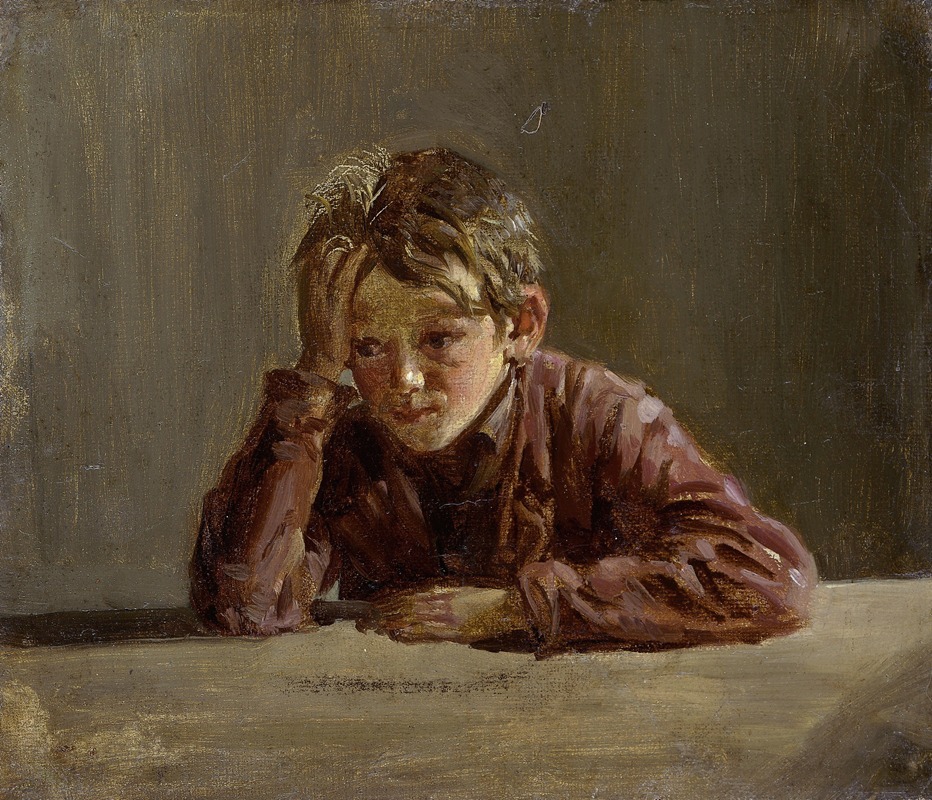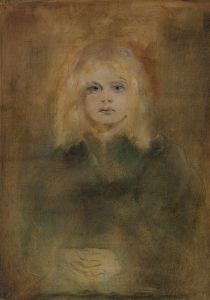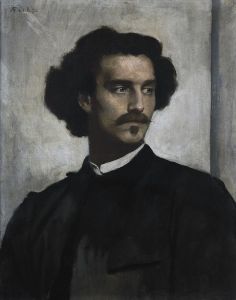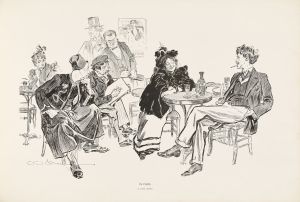
Georg, der Bruder des Künstlers, am Tisch sitzend
A hand-painted replica of Franz von Lenbach’s masterpiece Georg, der Bruder des Künstlers, am Tisch sitzend, meticulously crafted by professional artists to capture the true essence of the original. Each piece is created with museum-quality canvas and rare mineral pigments, carefully painted by experienced artists with delicate brushstrokes and rich, layered colors to perfectly recreate the texture of the original artwork. Unlike machine-printed reproductions, this hand-painted version brings the painting to life, infused with the artist’s emotions and skill in every stroke. Whether for personal collection or home decoration, it instantly elevates the artistic atmosphere of any space.
Franz von Lenbach was a prominent German painter known for his portraits of notable figures in the late 19th and early 20th centuries. One of his lesser-known works is "Georg, der Bruder des Künstlers, am Tisch sitzend" (Georg, the Artist's Brother, Sitting at the Table). This painting is a portrait of Lenbach's brother, Georg, and it exemplifies the artist's skill in capturing the character and essence of his subjects through portraiture.
Franz von Lenbach was born on December 13, 1836, in Schrobenhausen, Bavaria. He initially studied architecture before turning to painting, which became his true passion. Lenbach's career took off after he studied at the Academy of Fine Arts in Munich and later traveled to Italy, where he was influenced by the works of the Old Masters. His reputation grew as he became a sought-after portraitist, painting figures such as Otto von Bismarck, Richard Wagner, and Pope Leo XIII.
The painting "Georg, der Bruder des Künstlers, am Tisch sitzend" is a testament to Lenbach's ability to portray intimate and personal subjects. While there is limited information available specifically about this painting, it is known that Lenbach often painted his family members, capturing their likenesses with great sensitivity and attention to detail. This particular work likely reflects the close relationship between Franz and his brother Georg, as well as Lenbach's interest in exploring the personalities of those closest to him.
Lenbach's style is characterized by a realistic approach, with a focus on the psychological depth of his subjects. He often employed a dark palette, using rich browns and deep blacks to create a sense of depth and intensity. This technique is evident in "Georg, der Bruder des Künstlers, am Tisch sitzend," where the subdued color scheme and careful attention to light and shadow contribute to the overall mood of the painting.
Throughout his career, Lenbach was celebrated for his ability to capture the essence of his sitters, and his portraits were highly sought after by the elite of his time. His works are considered significant contributions to the genre of portraiture, and they offer a glimpse into the personalities and social circles of 19th-century Europe.
Franz von Lenbach's legacy as a portraitist endures, with many of his works housed in major art collections and museums around the world. His ability to convey the character and presence of his subjects continues to be admired by art historians and enthusiasts alike. While "Georg, der Bruder des Künstlers, am Tisch sitzend" may not be as widely recognized as some of his other portraits, it remains an important piece within Lenbach's oeuvre, showcasing his talent for capturing the human spirit through art.


















